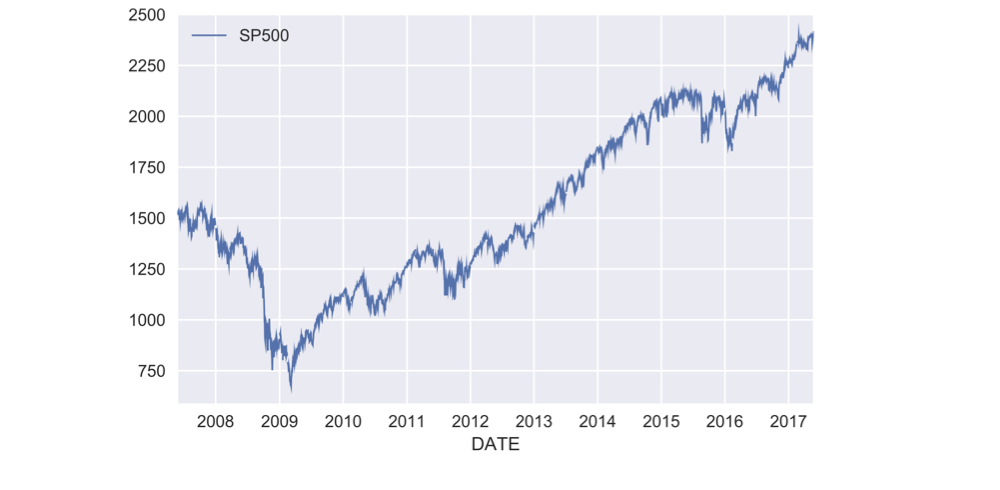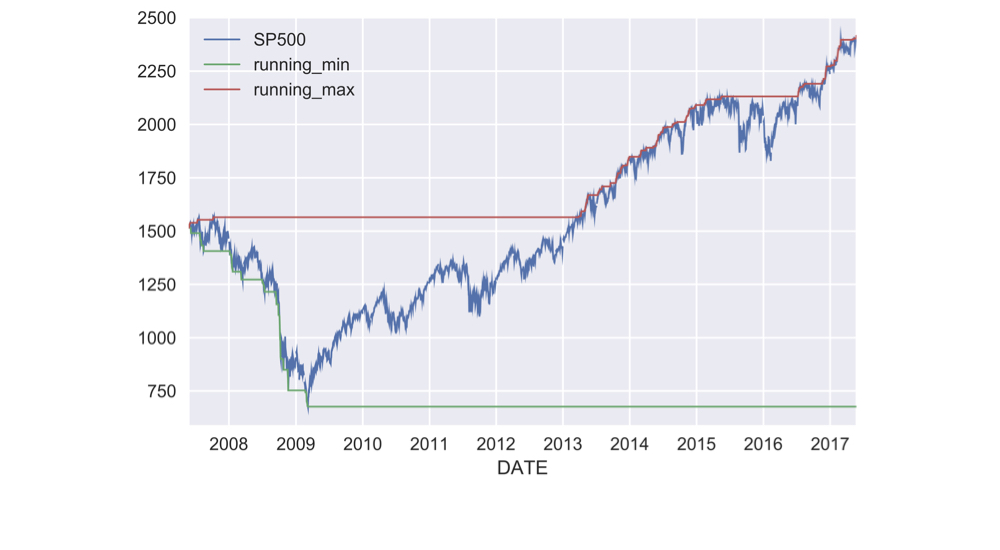Expanding window functions with pandas
Manipulating Time Series Data in Python

Stefan Jansen
Founder & Lead Data Scientist at Applied Artificial Intelligence
Expanding windows in pandas
- From rolling to expanding windows
- Calculate metrics for periods up to current date
- New time series reflects all historical values
- Useful for running rate of return, running min/max
- Two options with pandas:
.expanding()- just like.rolling().cumsum(),.cumprod(),cummin()/max()
The basic idea
df = pd.DataFrame({'data': range(5)})df['expanding sum'] = df.data.expanding().sum()df['cumulative sum'] = df.data.cumsum()df
data expanding sum cumulative sum
0 0 0.0 0
1 1 1.0 1
2 2 3.0 3
3 3 6.0 6
4 4 10.0 10
Get data for the S&P 500
data = pd.read_csv('sp500.csv', parse_dates=['date'], index_col='date')
DatetimeIndex: 2519 entries, 2007-05-24 to 2017-05-24
Data columns (total 1 columns):
SP500 2519 non-null float64

How to calculate a running return
Single period return $r_t$: current price over last price minus 1:
$$r_t = \frac{P_t}{P_{t-1}} - 1$$
- Multi-period return: product of $(1 + r_t)$ for all periods, minus 1:
$$R_T = (1 + r_1)(1 + r_2)...(1 + r_T) - 1$$
- For the period return:
.pct_change() - For basic math
.add(),.sub(),.mul(),.div() - For cumulative product:
.cumprod()
Running rate of return in practice
pr = data.SP500.pct_change() # period returnpr_plus_one = pr.add(1)cumulative_return = pr_plus_one.cumprod().sub(1)cumulative_return.mul(100).plot()

Getting the running min & max
data['running_min'] = data.SP500.expanding().min()data['running_max'] = data.SP500.expanding().max()data.plot()

Rolling annual rate of return
def multi_period_return(period_returns): return np.prod(period_returns + 1) - 1pr = data.SP500.pct_change() # period returnr = pr.rolling('360D').apply(multi_period_return)data['Rolling 1yr Return'] = r.mul(100)data.plot(subplots=True)
Rolling annual rate of return
data['Rolling 1yr Return'] = r.mul(100)data.plot(subplots=True)

Let's practice!
Manipulating Time Series Data in Python

